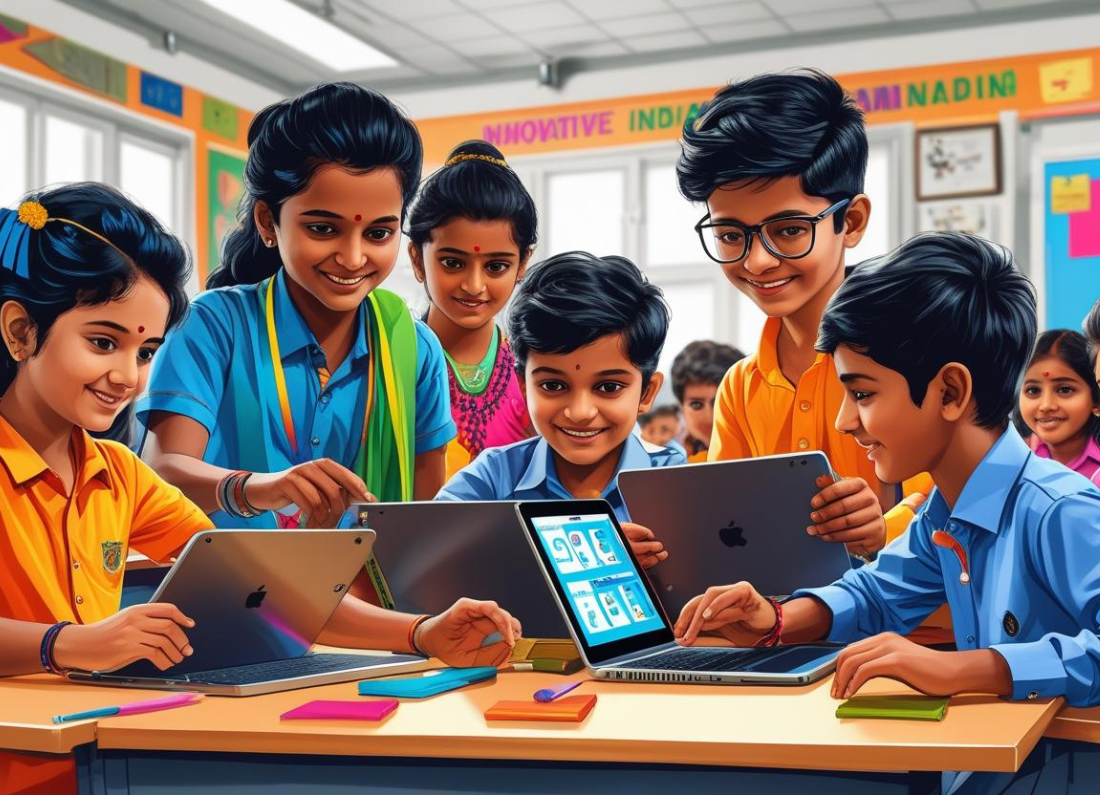In recent years, Artificial Intelligence (AI) has gone from a futuristic concept to a powerful tool reshaping various sectors — and education is no exception. While much of the buzz around AI has centered on urban schools and digital-first classrooms, the real test of its transformative potential lies in rural India.
With over 65% of India’s population residing in rural areas, bridging the educational divide is not just a developmental goal—it’s a national imperative. In this article, we explore how AI is improving learning outcomes, supporting teachers, and enhancing access in rural communities—through real-life impact stories and breakthrough initiatives.
🌾 The Challenges of Rural Education
Before understanding how AI fits into the equation, it’s crucial to recognize the hurdles rural India faces in education:
- Shortage of trained teachers
- Lack of access to quality learning materials
- Low student-teacher ratios
- Limited digital infrastructure
- Language and cultural diversity
These challenges demand scalable, flexible, and localized solutions—and AI is emerging as a promising tool to meet these demands.
💡 What Role Does AI Play in Rural Education?
AI can:
- Personalize learning based on a student’s pace and comprehension.
- Translate content into regional languages for better accessibility.
- Support teachers through performance tracking and smart content recommendations.
- Analyze student data to detect dropouts or learning gaps.
- Enable remote learning through intelligent tutoring systems.
Let’s now look at some inspiring impact stories and initiatives that bring these capabilities to life.
🏆 Impact Story 1: MindCraft – Personalized Learning in Rural Schools
MindCraft, a homegrown AI-powered learning platform, has been deployed in rural parts of Uttar Pradesh and Maharashtra. Its mission is to personalize education for students in underserved schools where teacher availability is sparse.
Features:
- AI-generated daily learning paths
- Real-time feedback and assessments
- Multilingual content delivery (Hindi, Marathi, and more)
- Works offline using minimal internet
Results:
In pilot schools using MindCraft:
- Students showed a 30% improvement in math and science comprehension.
- Teachers reported spending 40% less time on grading and lesson planning.
- The dropout rate decreased in several villages due to increased student engagement.
“The AI app feels like a personal tutor,” says Ramesh, a class 8 student in rural Sitapur.
“It helps me learn even when the teacher is not around.”
🏆 Impact Story 2: Sampark Smart Shala – Audio AI for Government Schools
Sampark Foundation’s Smart Shala initiative uses AI-integrated audio boxes to deliver interactive lessons in local languages. Designed for government schools across six Indian states, this tool doesn’t need internet or smartphones.
How It Works:
- Teachers activate a battery-operated “audio box” that delivers curated lessons.
- AI analyzes classroom interaction and learning progress.
- Lessons follow NCERT-aligned curriculum and include songs, stories, and quizzes.
Outcomes:
- Reached 2 crore children across 1.4 lakh government schools.
- Language and math proficiency improved by over 20% in 6 months.
- Teachers gained confidence in using tech tools without needing high-tech skills.
“We have seen children recite math tables with joy and sing science concepts,” says a teacher from Chhattisgarh.
“It brings life to the classroom.”
🏆 Impact Story 3: AI-Powered Anganwadis in Maharashtra
Nagpur district recently implemented AI-enabled Anganwadis for pre-primary education. In collaboration with NGOs and government bodies, these centers provide tablet-based learning with AI-backed content analysis for early learners.
Key Innovations:
- AI assesses children’s emotional and cognitive development
- Teachers get dashboards showing learning progress and alerts
- Content is gamified and culturally contextualized
Impact:
- 50% rise in early numeracy and literacy skills within 3 months
- Parents reported increased enthusiasm among children to attend
- Teachers could customize activities for special-needs children using AI insights
🏆 Impact Story 4: Avidus – A Teen-Led AI Learning Platform
Rajlaxmi Chavan, a teenager from Maharashtra, created Avidus, an AI-driven online learning platform offering multilingual courses in financial literacy and soft skills. The platform is entirely free and accessible even on low-end devices.
Platform Highlights:
- AI personalizes content flow based on prior knowledge
- Courses offered in English, Hindi, and Marathi
- Community-based learning forums for peer support
Results:
- Over 5,000 users from semi-urban and rural areas signed up in the first few months
- High completion rates due to gamified AI nudges and reminders
- Featured in major Indian media outlets for impact-driven innovation
“I wanted my village and others like it to have access to the skills I learned online,” says Rajlaxmi.
“AI made it easier to scale the platform to many students quickly.”
🧠 Why These Stories Matter
These impact stories show that AI is not just for elite urban classrooms—it can:
- Empower underserved students to learn independently
- Help teachers be more effective and less overburdened
- Drive inclusive education by respecting local languages and cultural contexts
- Address gender and disability gaps through personalized and accessible learning
Moreover, they serve as proof that grassroots innovation and government collaboration can make EdTech equitable.
🔍 Key Trends in AI & Rural Education
1. Multilingual AI Tools
Tools that speak the learner’s language are proving to be more engaging and inclusive.
2. Low-Bandwidth Optimization
AI-powered apps that function offline or on 2G networks are reaching the last mile.
3. AI for Teacher Support
Rather than replacing teachers, AI assists them—automating attendance, tracking performance, and recommending interventions.
4. Community-Centric Implementation
Solutions that involve local educators, parents, and panchayat leaders see higher adoption and success.
⚠️ Challenges to Tackle Ahead
While the success stories are encouraging, several hurdles remain:
- Digital infrastructure gaps (device access, electricity)
- Teacher training on AI tools
- Data privacy and ethical use of AI in children’s education
- Scalability and long-term funding for pilot programs
Continued investment in policy, infrastructure, and community partnerships is essential to sustain progress.
✅ Conclusion: A Future Made Smarter with AI
AI is helping rural India leapfrog traditional barriers in education, creating smart classrooms where there were none and turning smartphones into powerful learning aids.
These impact stories show that with the right intent, design, and community integration, AI can be a game-changer for rural education. By supporting and scaling such innovations, India can move closer to its goal of “education for all”, regardless of geography or income.







Leave a Reply